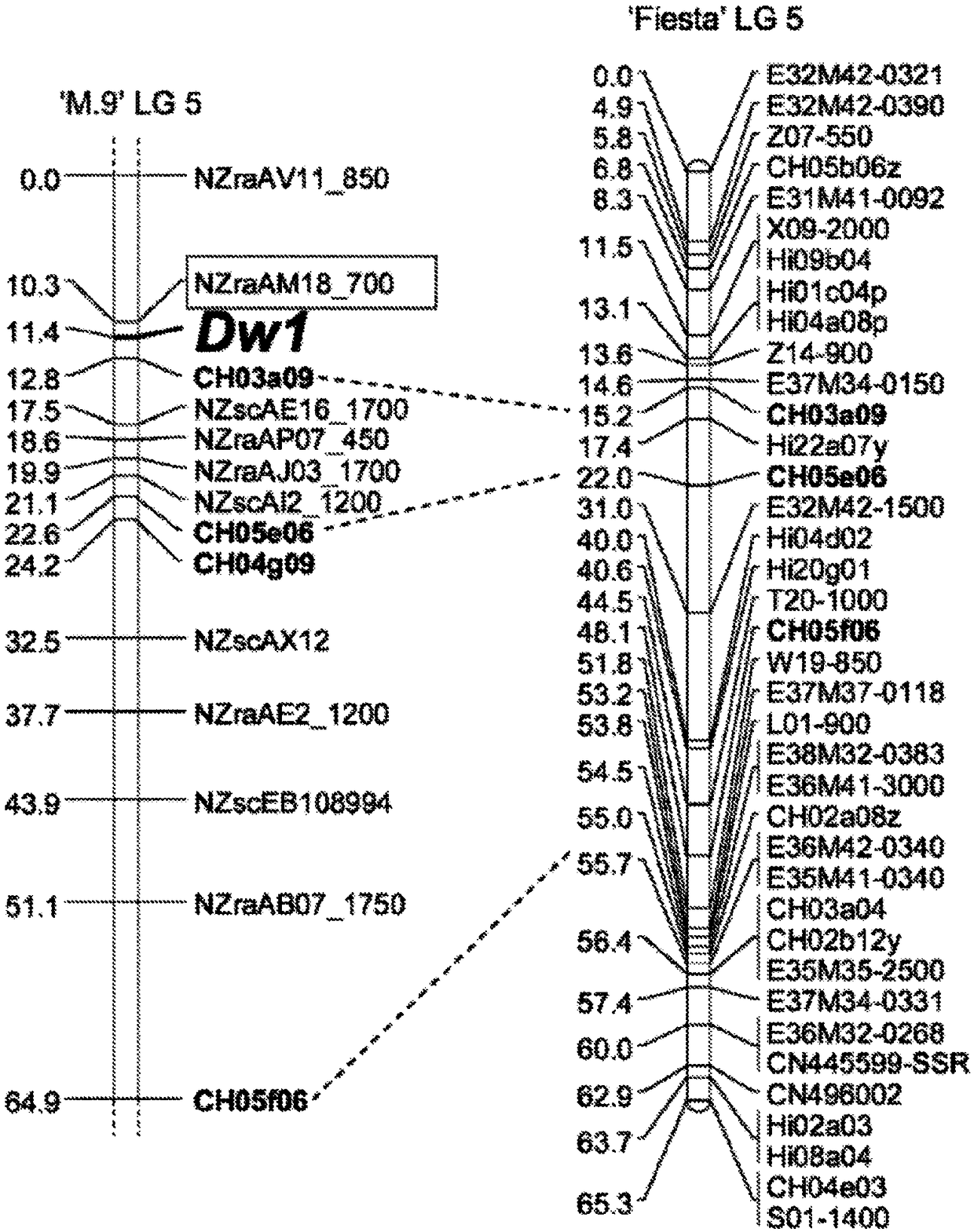Compositions and methods for manipulating the development of plants
A plant and auxin technology, applied in botany equipment and methods, biochemical equipment and methods, chemical instruments and methods, etc., can solve the unresolved problems of scion vitality and basic mechanism of flowering
- Summary
- Abstract
- Description
- Claims
- Application Information
AI Technical Summary
Problems solved by technology
Method used
Image
Examples
Embodiment Construction
[0277] The present invention provides methods and materials for producing or selecting plants having at least one dwarf-associated phenotype.
[0278] As shown in Table 1 below, the dwarfing-associated phenotype may be manifested in the produced or selected plants, or may be manifested in the scion grafted onto the plant used as rootstock.
[0279] Table 1.
[0280]
[0281] The dwarfing-associated phenotype may be selected from:
[0282] a) Altered auxin transport,
[0283] b) auxin transport is slower,
[0284] c) reduced top dominance,
[0285] d) altered xylem / phloem ratio,
[0286] e) increased number of phloem elements,
[0287] f) phloem elements are smaller,
[0288] g) thicker bark,
[0289] h) a more bushy habit,
[0290] i) reduced root mass,
[0291] j) reduced vitality,
[0292] k) less vegetative growth,
[0293] l) branch growth terminates earlier,
[0294] m) earlier flowering ability,
[0295] n) precocious,
[0296] o) earlier type change,
[...
PUM
 Login to View More
Login to View More Abstract
Description
Claims
Application Information
 Login to View More
Login to View More - R&D
- Intellectual Property
- Life Sciences
- Materials
- Tech Scout
- Unparalleled Data Quality
- Higher Quality Content
- 60% Fewer Hallucinations
Browse by: Latest US Patents, China's latest patents, Technical Efficacy Thesaurus, Application Domain, Technology Topic, Popular Technical Reports.
© 2025 PatSnap. All rights reserved.Legal|Privacy policy|Modern Slavery Act Transparency Statement|Sitemap|About US| Contact US: help@patsnap.com



